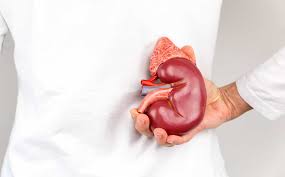Article
Duo Falls Short in Treating Advanced Kidney Cancer
Author(s):
Progression-free survival (PFS) was not significantly improved with the combination of dalantercept plus Inlyta (axitinib) in patients with advanced renal cell carcinoma (RCC) compared with placebo, according to the results from the phase 2 DART trial.
Progression-free survival (PFS) was not significantly improved with the combianation of dalantercept plus Inlyta (axitinib) in patients with advanced renal cell carcinoma (RCC) compared to placebo, according to the results from the phase 2 DART trial.
The median PFS for dalantercept plus Inlyta was 6.8 months versus 5.6 months for placebo plus axitinib, and the experimental combination did not reduce the rate of disease progression or death.
Dalantercept is an ALK1-receptor fusion protein that acts as a ligand trap for bone morphogenetic proteins 9 and 10. Acceleron Pharma announced that it is ending development of the drug.
“We are disappointed by the results, given the need for new agents that improve outcomes for patients with advanced RCC,” Habib Dable, president and CEO of Acceleron, said in a statement. “Based on the lack of efficacy, we are discontinuing the development of dalantercept. We remain focused on the development of luspatercept across multiple phase 3 and phase 2 studies, and ACE-083 across two neuromuscular diseases, and will continue to pursue additional candidates in areas of high unmet medical need.”
The DART clinical trial was a two-part study in patients with advanced renal cell carcinoma. Part 1 is a dose-escalation study of dalantercept plus Inlyta to evaluate the safety and tolerability of the combination in patients whose disease has progressed following one to three lines of prior therapy. Part 2 is a randomized, double-blind study of patients with advanced RCC who have progressed following treatment with a VEGF inhibitor. Patients may have also received prior mTOR therapy and/or immunotherapy.
Efficacy data are based on 119 patients who received any study drug. Fifty-eight patients were randomly assigned to dalantercept plus Inlyta and 61 patients were randomly assigned to placebo plus Inlyta.
PFS for patients who had received two or more prior systemic anticancer therapies was the key secondary endpoint. Again, the experimental combination failed to improve median PFS compared with placebo: 8.1 months versus seven months. The confirmed objective response rate for the combination was 19 percent versus 25 percent for placebo.
Frequency of grade 3 or higher adverse events (AEs), regardless of causality, were similar between the two groups: 59 percent for the experimental combination versus 64 percent with placebo. Frequency of serious AEs of any grade, regardless of causality, were also similar: 29 percent in the combination arm versus 26 percent in the placebo arm.
Phase 1 data were published in December 2016. Fifteen patients were enrolled in the dose-escalation phase; six patients were treated at the 0.6 mg/kg dose level, four at the 0.9 mg/kg dose level, and five at the 1.2 mg/kg dose level. In the dose-expansion phase, nine patients entered treatment at the 1.2 mg/kg dose. Five patients later joined a second expansion cohort at the 0.9 mg/kg dose level.
At the time of the report, the median PFS at the recommended phase 2 dose level of 0.9 mg/kg was not estimable, but exceeded 9.6 months (nine patients). At 12 months, the PFS rate was 39.7 percent across all cohorts and 50 percent for patients treated at the 0.9 mg/kg dose. Overall survival was 75 percent across all cohorts and 88.9 percent at the 0.9 mg/kg dose level.
Twenty-eight of 29 patients were evaluable for radiographic tumor response assessment. Seven patients (25.0 percent) had partial response, 17 (60.7 percent) had stable disease and four (14.3 percent) had progressive disease as their best response. Fourteen patients achieved disease control (partial response + stable disease) for over six months, for a disease control rate of 50 percent.
Investigators reported no dose-limiting toxicities, grade 4/5 drug-related AEs, or serious bleeding events in the dose-escalation cohorts (15 patients). The most common (at least 20 percent) drug-related treatment-emergent AEs included fatigue, diarrhea, peripheral edema, nausea, increased creatinine, epistaxis, pericardial effusion and telangiectasia.




